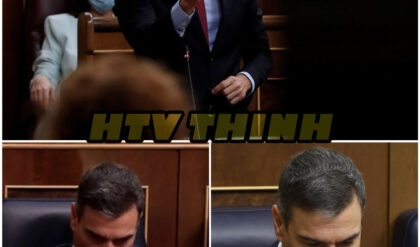
BOSTON — So … are the Celtics the anomaly, or are the Celtics the future?
I spent this past weekend in Beantown for the Sloan Sports Analytics Conference, and while I was there, I watched Boston shred Dallas and utterly embarrass Golden State.
The Celtics are 48-12, rank first in offense and second in defense and seem likely to end up with one of the top scoring margins of all time.
The only thing stopping people from showering this team with more praise are its last four postseasons, but right now, the Celtics seem completely unstoppable. Anointing any other team as the title favorite right now requires either wishful thinking or willful ignorance.
Having an analytics conference as the backdrop for these butt-kickings seemed oddly appropriate.The Celtics’ dominance is in part a result of the analytics revolution, and in equal part their being a peculiar outlier compared to what that revolution has done to the rest of the NBA.
Let’s start with the basic thing with which analytics impacted the NBA most heavily: Three is more than two. Basketball teams were incredibly slow to realize this and fully take advantage of it.
As a result, for several years, a simple life hack stood available to any team interested in seizing it: increase 3-point attempts, and move up the offensive charts.Take away 3s, and move up the defensive charts.Three-point frequency correlated heavily with success at both ends. Not anymore
.We’ve now escalated to the point that the relationship has completely broken down. Everyone is launching 3s and spacing the floor now; if they’re not bombing away, it isn’t because of Neanderthal math; it’s because they suck at it.There are no more Brook Lopezes or Marc Gasols to suddenly unleash as 3-point shooters.
Teams are taking more 3s than ever, making up about 39.2 percent of total field goal attempts, but diminishing returns have hit hard.With league averages of 36.7 percent on 3s and 54.5 percent on 2s, we’ve roughly hit the threshold where a typical 3 no longer has a higher expected return than a typical 2.
(A paper at this conference argued that, once we account for the much higher free-throw rates on 2s, teams have actually already sailed past the equilibrium point here.) In a related story, the relationship between frequency of 3s and overall offensive efficiency has broken down.
The Memphis Grizzlies are third in 3- point rate and last by a mile in efficiency; on the flip side, the Oklahoma City Thunder and Indiana Pacers are second and third in offense, respectively, with below-average 3-point rates.

(They still shoot 3s at rates that would have led the league as recently as 2016, mind you; they just haven’t needed to push the envelope any further.)
The more interesting story, however, is on the defensive end.The thing about stopping opposing 3-point attempts is that it turns out you literally can’t.
Or at least, nobody has figured out how without opening the floodgates in other areas.While a few teams have had success with low opponent 3-point rates — Denver, Orlando and Minnesota — most of the teams at the top of this category are getting cooked.
The most notable example is Indiana, as any Pacers fan can attest; the Pacers have sold out on preventing 3s and give up just 28.6 per 100 possessions, by far the fewest of any team.They also rank 25th in defense, allowing a hailstorm of rim attempts and free throws as part of the bargain despite employing an elite rim protector in Myles Turner.
Against most NBA teams, this strategy seems likely to backfire; protecting the basket remains the most critical part of defense, and even the best shot blockers can only “limit” an opponent to 65 percent or so shooting on rim attempts.
Better to take those attempts way and surrender the rest to the whims of the 3-point variance gods. This takes us back to the Celtics, because it turns out Boston is breaking this strategy.
eight players all shoot over six 3-point attempts per 100 possessions, and all shoot at least 35 percent from distance; as a team, Boston has by far the highest 3-point rate (nearly every other shot) and ranks fourth in accuracy at 38.6 percent.
Thus, the core strategy against every other team — deny the rim, live with the 3s — is basically a death sentence against Boston, a 58 percent effective field goal percentage proposition.The distributed nature of the threat is the other problem and stood out in stark contrast to the Warriors on Sunday.While the Warriors surrounded two generational shooters with much more ordinary perimeter skill, Boston rotates eight guys who can burn you.
Ironically, the teams that seem to give Boston the most trouble are the ones that make the gamble on taking away 3s; a losing bet against everyone else, it gives you a fighting chance versus the Celtics.The Pacers, for instance, beat Boston twice; Detroit gives up the second-fewest 3s and has been pasted by everyone else but took the Celtics to overtime in Boston in their only meeting this season.
Denver is third on the list and won in Boston (the two teams meet again Thursday in a potential NBA Finals preview, by the way); Minnesota is sixth, and both meetings with the Celtics went to overtime.
Otherwise, more desperate strategies come into play, such as Golden State’s first-quarter approach Sunday.To get their best help defender, Draymond Green, engaged in the play rather than marooned at the 3-point line, the Warriors adopted the radical strategy of putting Green on Boston’s worst 3-point shooter (Jaylen Brown, who would be the best shooter in a few other team’s lineups but is shooting a mere 35.2 percent from 3 this season) and having Green sag in the paint while letting Brown fire away.If he missed the first few, this Jedi mind trick might have worked; instead, Brown made five 3s in the first seven minutes, and the rout was on.
The result of all this shooting and spacing isn’t just a splash fest from 3, however; it’s also a runway to the rim. Boston is third in the NBA in 2- point percentage at 57.6 percent precisely because of all the room.
Watch this play from the second quarter Sunday. Steph Curry picks up Jayson Tatum on a switch and is getting mashed by the bigger Tatum in the paint but manages to hold him up for four dribbles, normally more than enough time for a help defender to come.
But the help never comes, because it’s stationed in a perimeter outpost many leagues from the action.The other four Celtics are outside the 3-point line, and all of them can shoot.
Kevon Looney is worried about Payton Pritchard at the upper wing, and Lester Quinones doesn’t want to leave Brown in the corner and finally makes a late, lame effort. (Had it been stronger,Tatum very likely spots Brown in the corner anyway.) An annoyed Curry motions for somebody, anybody, to come to his rescue as Tatum lays the ball in.
“That’s what we used to do to teams,” Curry lamented after the game.Indeed, it did feel a bit like a tactical changing of the guard.In terms of this past weekend’s nerd convention and where the game is going with 3s and spacing, Golden State brought a Commodore VIC-20 to a supercomputer fight.
What’s amazing is that the Warriors themselves are third in 3-point frequency. But because more than half of them come from two players, their spacing doesn’t stress defenses beyond their breaking point the way Boston’s distributed attack does.
Curry is still amazing, and Klay Thompson can still make it rain, but Golden State is league average or worse in 2-point shooting, free throws and turnovers.
This takes us to the final question: Is this what the league will look like in five years? Or is it just too hard to build the kind of talent base Boston has, where eight guys can shoot 3s and switch on defense? I mean, by definition, only half the guys in the league can be above-average shooters, right?
In any case, look for imitators to spawn soon.The Celtics are awesome, and stopping them is an impossible question — especially with Kristaps Porziņģis around to mash the switches that have occasionally vexed Boston in previous postseasons. Finding an entire rotation of shooting threats is hard, but if the Celtics’stampede continues through June,I’d expect plenty of their rivals to try it.
News
Test đẩy bài từ cms
Test đẩy bài từ cms, xóa sau khi dùng.
BREAKING: NFL Unanimously Votes In New Controversial Rule
(Photo by Ethan Miller/Getty Images) The NFL seems to be destined to ban the hip-drop tackle this week. The league office wants to ban a certain type of hip-drop tackle. The NFLPA disagrees. The owners voted on it. On Monday, it was…
Everyone Noticed The Same Strange Thing About This Year’s NFL Coaches Photo
Fans had questions after five NFL head coaches missed out on the league’s annual photo this week. Most of the coaches are in Orlando, Florida at the moment as the NFL annual owners meeting is taking place there. So they came together…
5 Most Overrated NFL Free Agent Signings Of 2024 So Far…And 5 Most Underrated That Are Flying Under The Radar
Now that most of the top 2024 NFL free agents are off the board, it’s a good time to look at which highly-anticipated signings are bound to disappoint — and which under-the-radar moves will pay more dividends than you think. So with…
Ranking The Craziest NFL Free Agent Deals Of All-Time From WORST To FIRST
Free agency completely changes the landscape of professional sports. When a player’s contract is up—he can go to any team and drastically alter the balance of power in the league. The NFL is no different. All it takes is one crazy deal…
BREAKING: AFC Super Bowl Contender Has Officially Made A Contract Offer To Odell Beckham Jr.
The Miami Dolphins have some interest in veteran playmaker, Odell Beckham Jr. Miami Dolphins coach Mike McDaniel spoke to reporters about the team’s early offseason at the NFL annual meeting Monday at the Ritz-Carlton Grande Lakes and informed everyone that the Dolphins and Odell Beckham Jr….
End of content
No more pages to load










